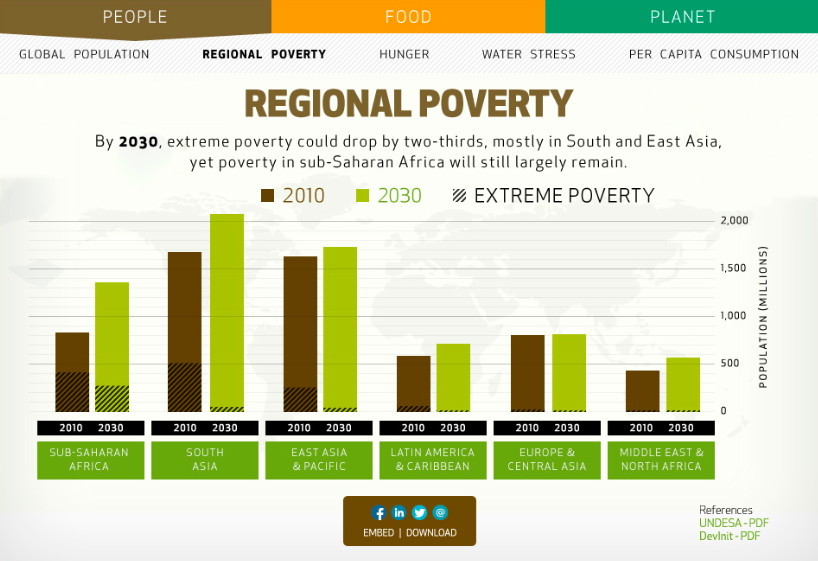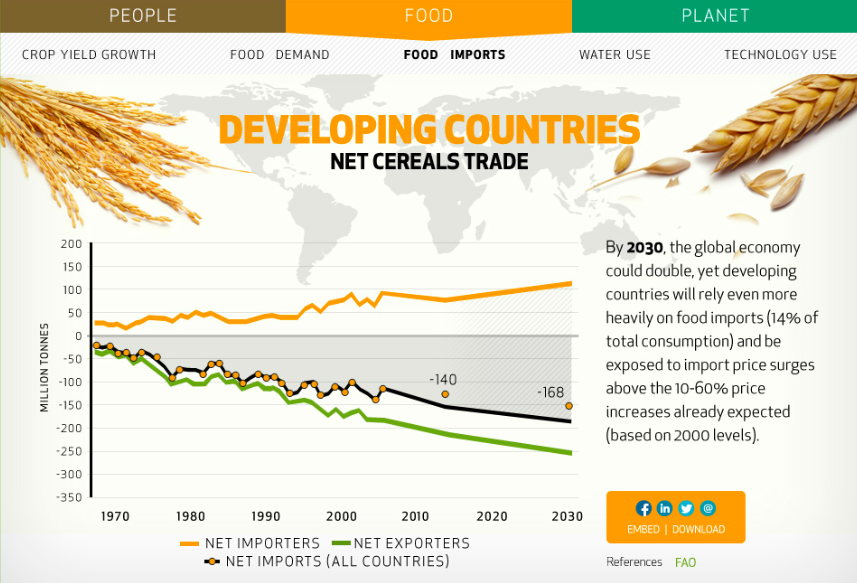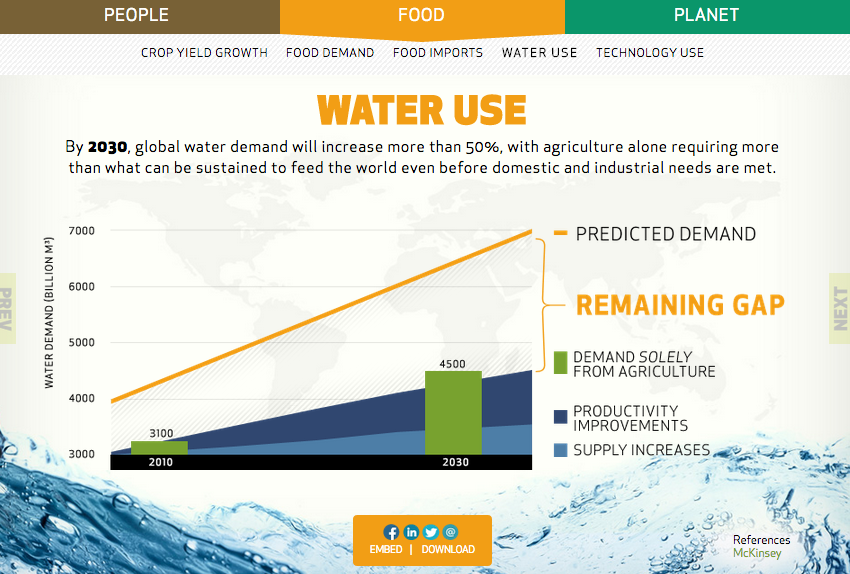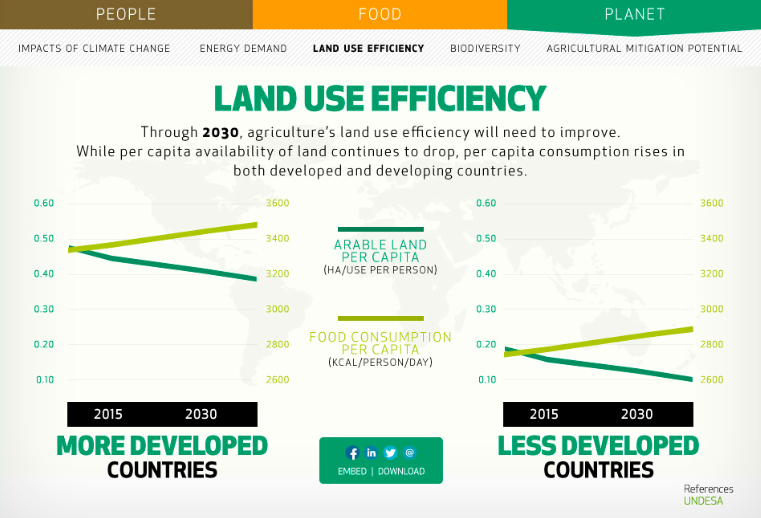This week in New York the first Open Working Groups will begin to discuss the Sustainable Development Goals (SDGs) that will replace the Millennium Development Goals (MDGs) when they expire in 2015. In an effort to inform the SDGs, Farming First has launched a creative infographic that skips forward in time to 2030, when the SDGs will be set to expire to show what the future of food and farming could look like, depending on decisions made now.
Just as you must decide on a location before you set out on a journey, when setting goals you must be certain of what you are trying to achieve. With that in mind – why don’t we reposition the “post-2015” agenda, and instead think about the measures we must put in place “pre-2030”? The infographic gives us this clear view of what we must achieve in terms for food, people and the planet by 2030, and how innovations in agriculture can help get us there.
So what does the world look like for food and farming in 2030? Global wealth is expected to continue growing, but mostly in the emerging economies. Resources will become even more scarce, especially on a per capita basis. The end of hunger and malnutrition could be in our sights, but we’d have to work harder to put this on the agenda for it to happen.
In terms of population growth, most of this will happen in sub-Saharan Africa and South Asia. For sub-Saharan Africa, this will increase demand considerably — poverty will persist and net food imports will get bigger.


Water scarcity is going to be a big threat — with about half the 2030 population being impacted. Agriculture’s expected water use needs alone will surpass currently predicted levels by 2030.

Land use efficiency will continue to improve, showing how modern agricultural practices are making the most of what land resources we have, but we must improve this even further to prevent further biodiversity losses by promoting R&D and technologies with high potential impact

While most forecasts look forward to a range of dates – from 2020 to 2050 and beyond – this is the only collection of 2030 data that gives a focussed look on where we could stand at the expiration of the SDGs.
Join us in asking policy makers to consider this possible future outlook, if agriculture is not empowered to play an important part in the SDGs.
Is this the future you would like to see?


